
2020 Triumph Street Triple RS vs KTM 790 Duke vs Kawasaki Z900: Spec...
- Oct 15, 2019
- Views : 22868


Nakeds are delicious big bikes giving you wow-performance in a package that can be enjoyed regularly far away from a racetrack. But, a good naked won’t leave you stumbling and fumbling on the race track either. Enter Triumph’s Street Triple. That was a bike that just didn’t put a foot wrong, on any front. And on a track or twisties it was subliminal. Absolute magic. Except for the older 675’s disappointing power output, it was the better machine when compared to Kawasaki’s rather heavy and cumbersome Z800. But the Kawasaki won on value and it isn’t going to be a walkover with the new Z900 because Team Green’s engineering ninjas have slashed away the flab and the result is, a very different motorcycle from its predecessor. The new Triple has also upped its game with displacement and horsepower numbers. Game on, then?
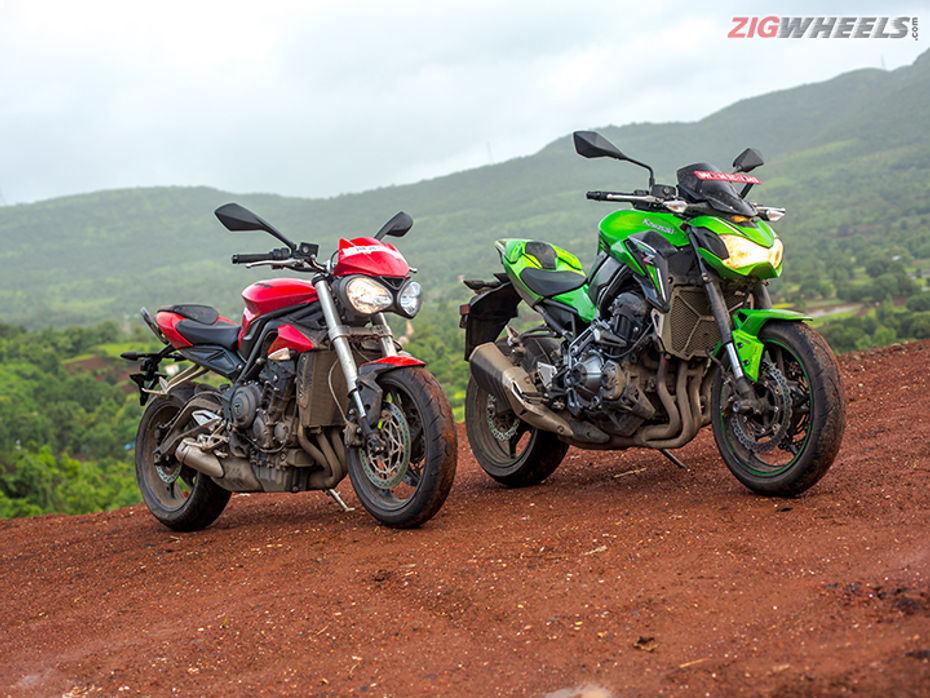
Design & Features:
A naked bike is about aggression and it has to look mean like a hungry wolf out to make a killing. Park the bikes next to each other and, without a shadow of doubt, it’s the Kawasaki Z900 that grabs your attention. The additional mass of the four-cylinder engine dictates large proportions, and there are handsome layers that cloak it in a shimmering contrast of green and black. The Japanese bike commanded everyone's attention wherever we went. The Street Triple S, on the other hand, is skimpily clad, but sadly in this case the teasing is tiresome as the 765 looks too similar to the older bike.
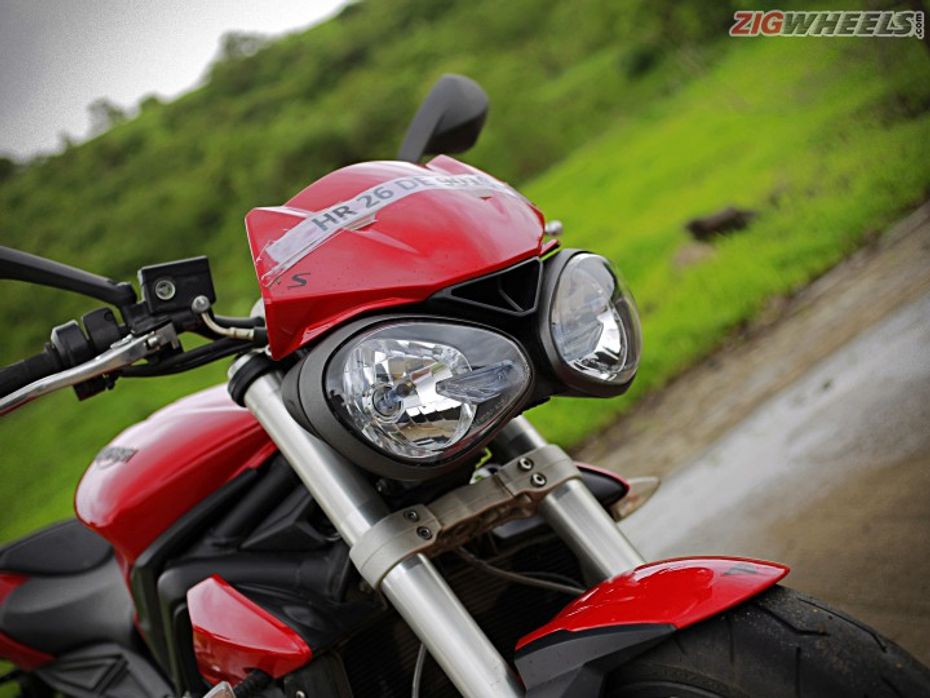
Despite the fiery red colour of the test bike, it was easily overshadowed by the Kawasaki Z900. So if you want a flashy bike that gets you the attention of a rock star, the Kawasaki is the bike for you. Although we expect the understated tones of the Brit will also have its own fan following.
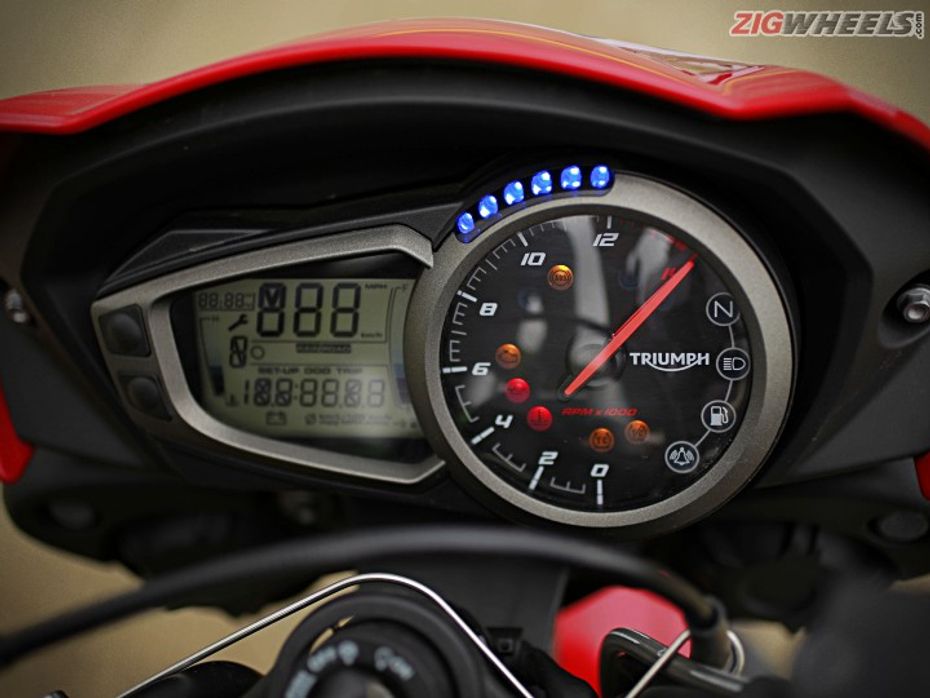
Both the bikes employ a semi-digital instrument console, with the Triumph Street Triple S using the same design as seen on the older bike while the Kawasaki offering shares its unit with the Kawasaki Z650. Both displays are easy to read on the go but I would have preferred to see a TFT screen (Street Triple R and RS gets it). Switchgear design is basic while the quality of the Kawasaki bike feels better than that of the Street Triple. It is the same case with build quality also, as the Z900 has fewer exposed wires and feels more solid than the British bike.
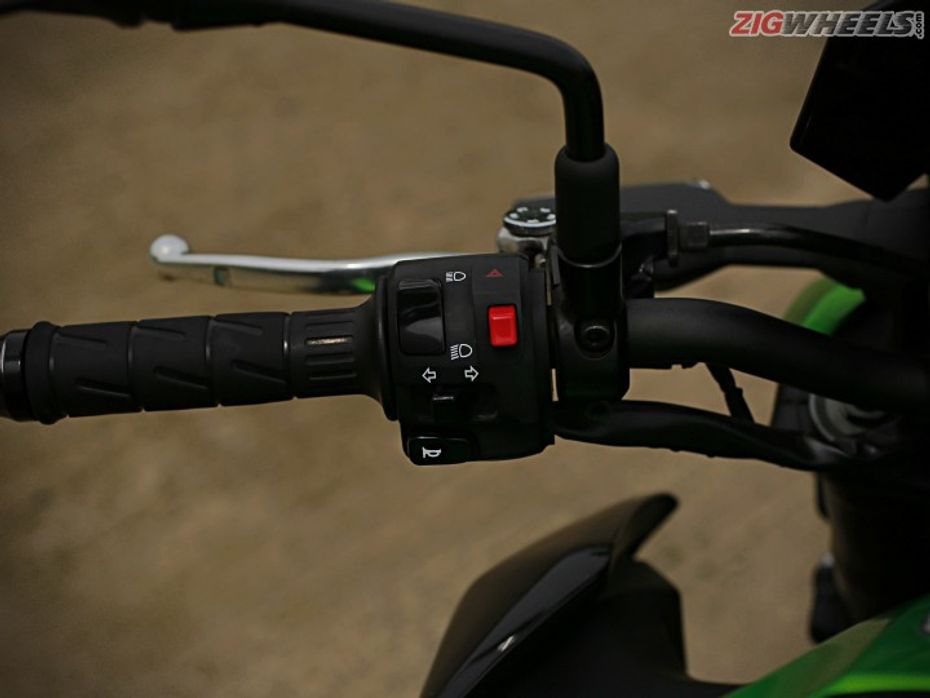
The Kawasaki Z900 also gets an optional accessories kit as seen on our test bike, which includes flyscreen, crash bobbins for the front forks, engine guards, engine casing covers, a gel tank pad, pillion seat cowl, a 12V charging socket on the handlebar and a radiator guard. The Street Triple S also gets a plethora of official aftermarket accessories but the test bike offered to us was bone-stock.
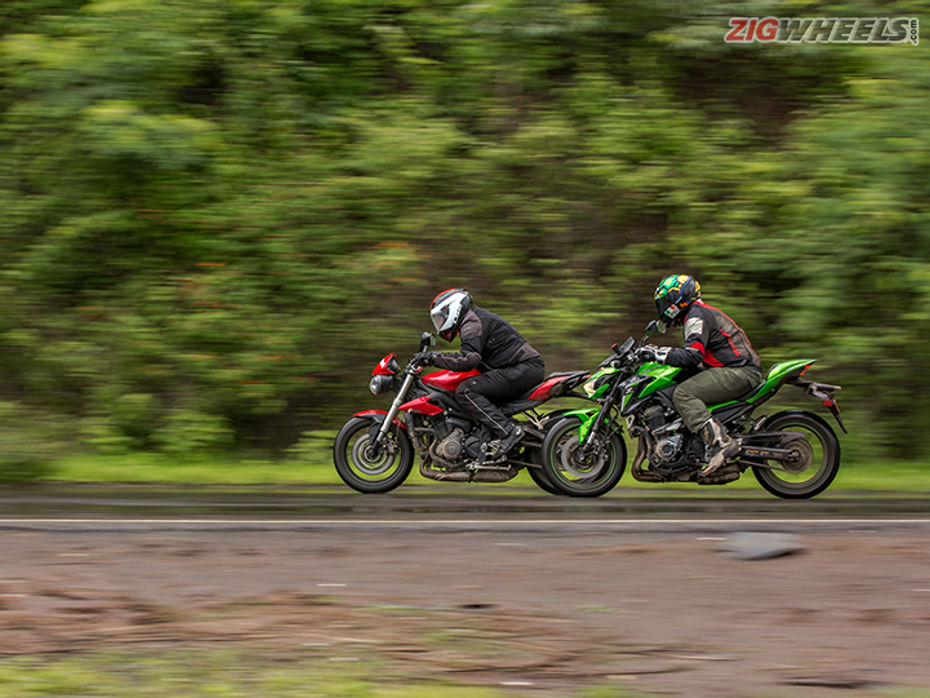
Engine & Performance:
It is the hunger for power that fascinates bikers and entice them to make an upgrade to a middleweight motorcycle. While both the bikes have similar numbers in terms of power output, the path taken to achieve it is contrasting. Kawasaki has scaled down the Z1000’s motor for its new offering, while Triumph engineers have bored out the old engine to increase displacement to 765cc. The Z900’s motor has a stroke of 56mm, which is similar to that of the Z1000’s engine, but the bore is smaller at 73.4mm, as opposed to 77mm, to endow the bike with a 948cc displacement.
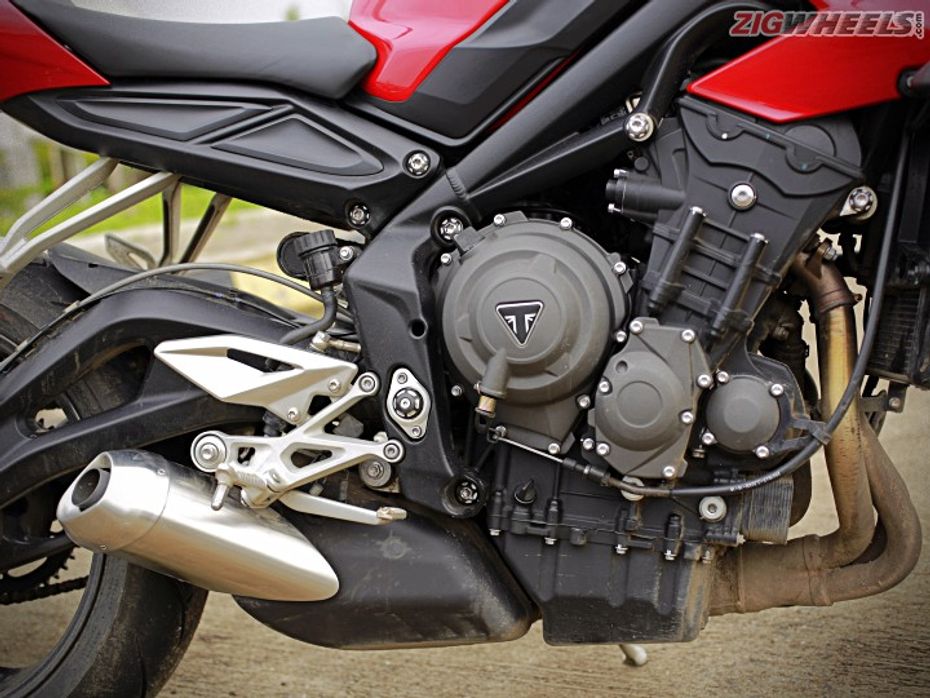
Talking about numbers, the Z900’s engine delivers 125PS at 9500rpm, as compared to the Z800’s 113PS. Peak torque now stands at 100Nm in comparison to the Z800’s 83Nm. The older Street Triple couldn’t rival the Z800 in the performance department as it was detuned for the Indian market and produced just 79.3PS and 57.3Nm of torque. But that isn’t the case with the new Street Triple S as we get the Euro-spec motor pushing out 113PS at 11,250rpm and delivering a peak torque of 73Nm at 9,100rpm.
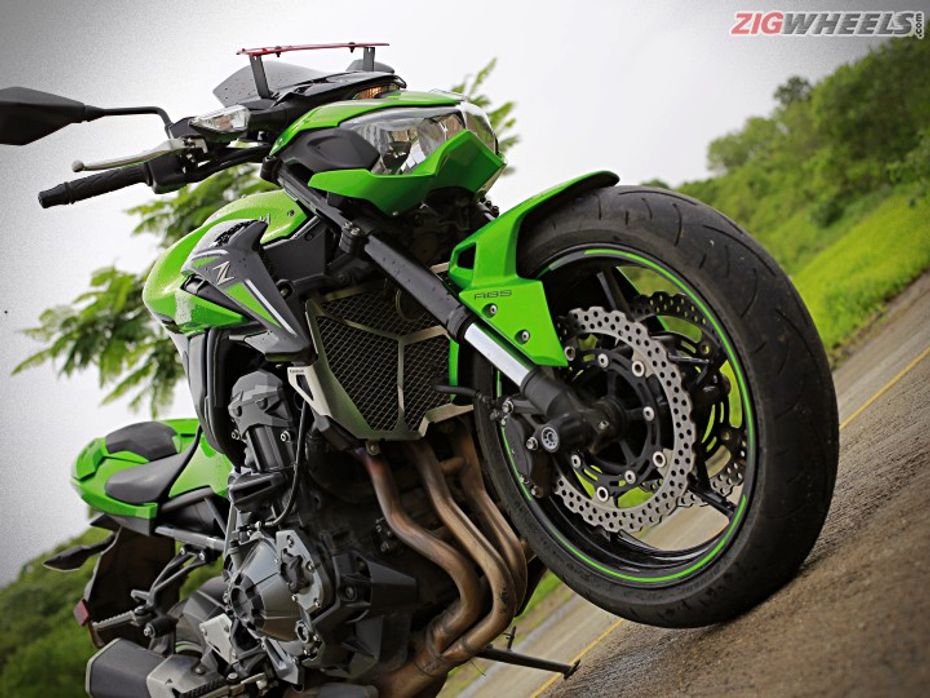
Start riding and the first thing one notices is the difference in character of both the engines. The Kawasaki has a very friendly and linear power delivery which makes you feel at home. While the Triumph’s frantic power delivery, especially in mid-range, will keep you on your toes and startled. The refinement of the Japanese motor is almost velvety and it is among the most tractable engines that I have ever ridden. You can pull away from as low as 20kmph in 6th gear and that speaks volumes about the four-cylinder engine. Such is the sleekness that you have keep an eye on the speedometer regularly to contain yourself from doing illegal speeds.
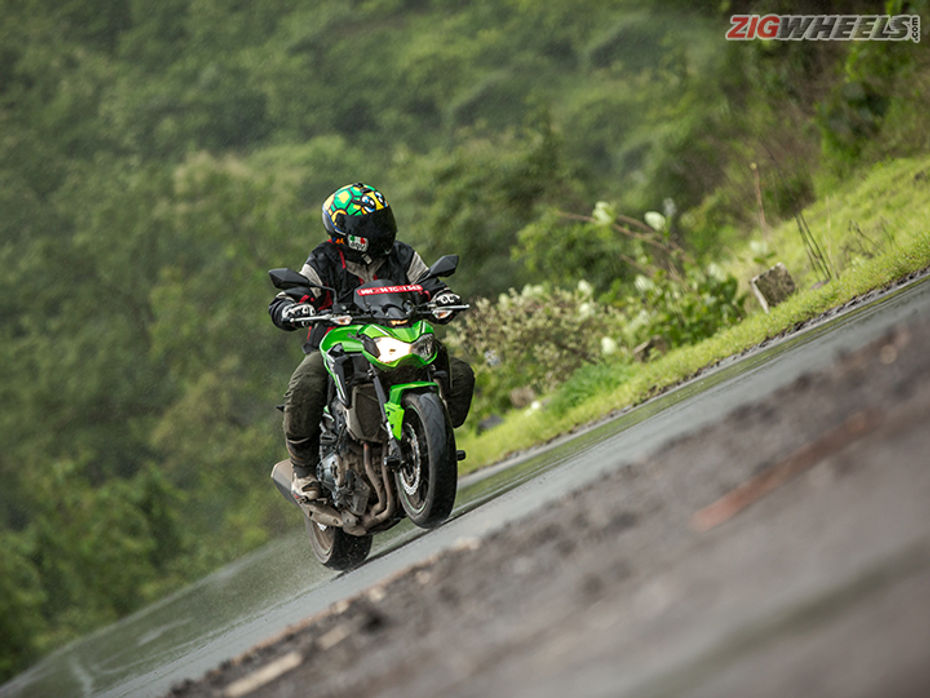
The 6-speed gearbox is faultless but I would have preferred a more vocal exhaust note as the stock sound is very muted. The tall sixth gear also makes the Z900 an able machine for touring and one can ride at speeds between 120-130kmph all day long without stressing the engine. The bike features a very light clutch that can be operated by two fingers, which makes riding the bike in crawling traffic less tiresome.
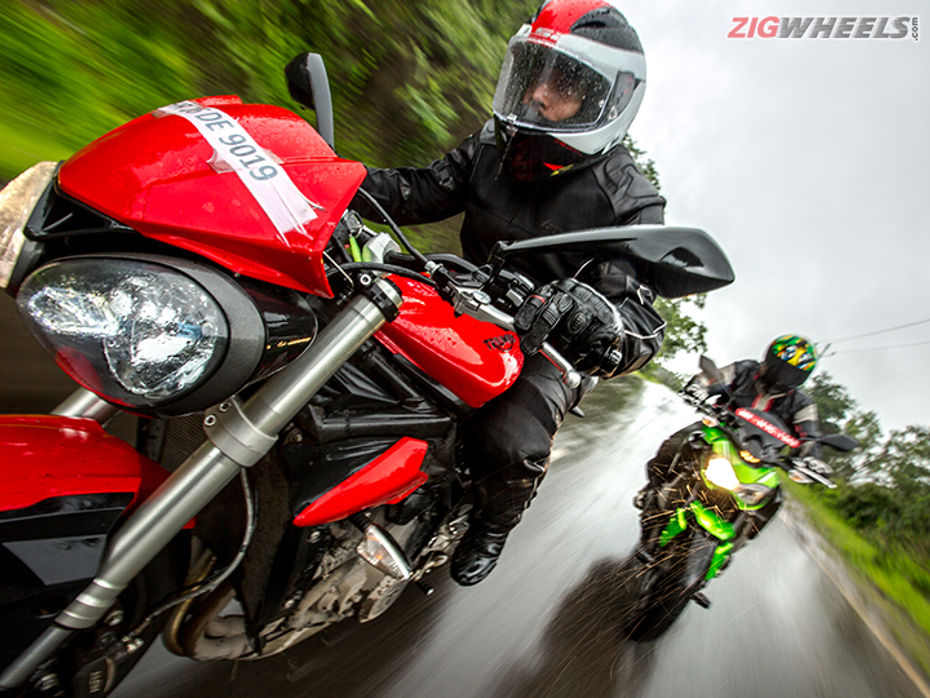
The Street Triple on the other hand feels a handful at lower rpms as the engine feels awkwardly gruff below 4,000rpm. But once past it, the engine comes alive with a wild shove of power till the redline, and that rush is addictive. And as you build momentum, the muffler starts singing with a deep bassy note with a hint of the intake whistle that makes the experience special. The new motor will be powering Moto2 bikes from 2019 and it has a likeable brashness about it as opposed to the practical and near-perfect nature of the Kawasaki engine. The Street Triple’s clutch is heavy, which makes it a task to ride the bike in city traffic, and vibrations can be felt on the handlebar, footpegs and tank. Shift quality of the 6-speed transmission could have been smoother and better. It does get the safety net of traction control to keep you at bay from sticky situations, and ride-by-wire means that it features two ride modes (road/rain). In rain mode, throttle response is much milder and it is useful in low grip conditions.
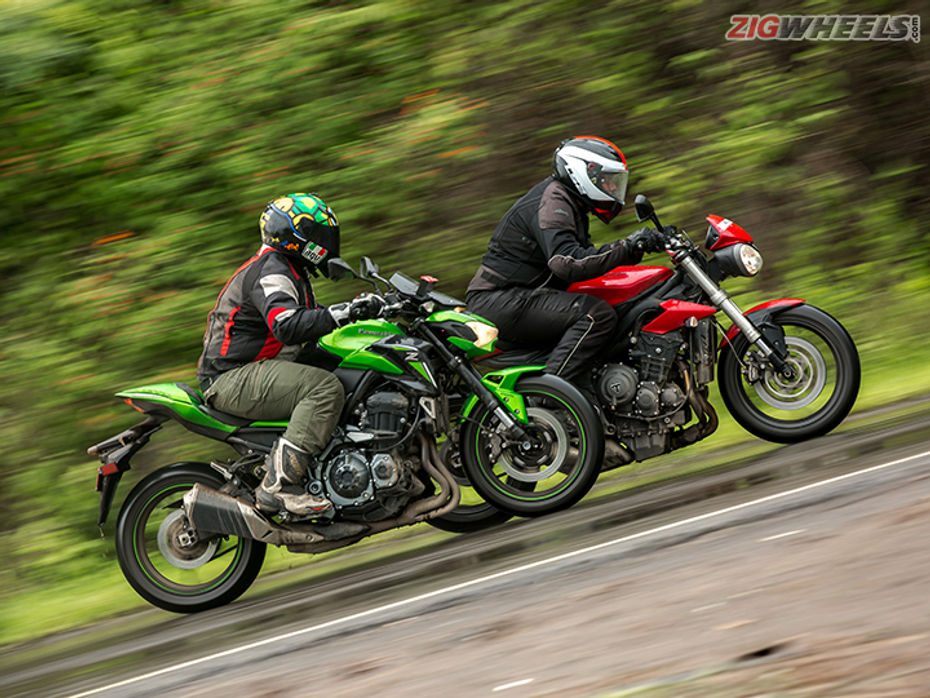
The Z900 on the other hand is an old-school bare-chested machine with no electronic wizardry, and your right wrist along with the very predictable power delivery works effectively as traction control here. In our acceleration test, the Z900 took 2.29 seconds to cross 60kmph and it did 0-100kmph in 3.7 seconds, while the Street Triple managed the same in 2.00 seconds and 3.59 seconds respectively. The Triumph is the bike if you are looking for outright hardcore performance; while the Z900 matches those numbers very closely, it does its job in a rather harmonious manner.
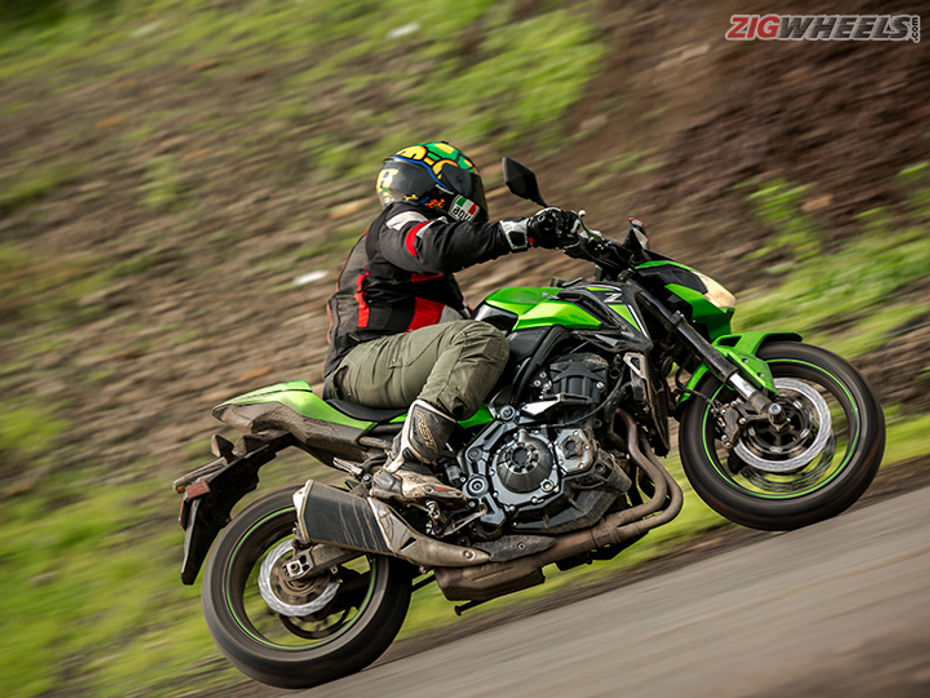
But in terms of daily practicality, the Kawasaki’s tractable motor makes it a better option among the two. I would also like to add that heat dissipation on both the motorcycles is fantastic as Kartik and I rode the bike through very slow-moving traffic and we never faced any heating issues. In our fuel efficiency test, the Kawasaki Z900 returned us 15.26kmpl in city which rose to 22.4kmpl on highway. The Triumph Street Triple’s mileage figure stood at 16.23kmpl in city and 21.48kmpl on highway. The Z900 has a fuel tank capacity of 17-litre while the British bike’s capacity is marginally more at 17.4-litre.
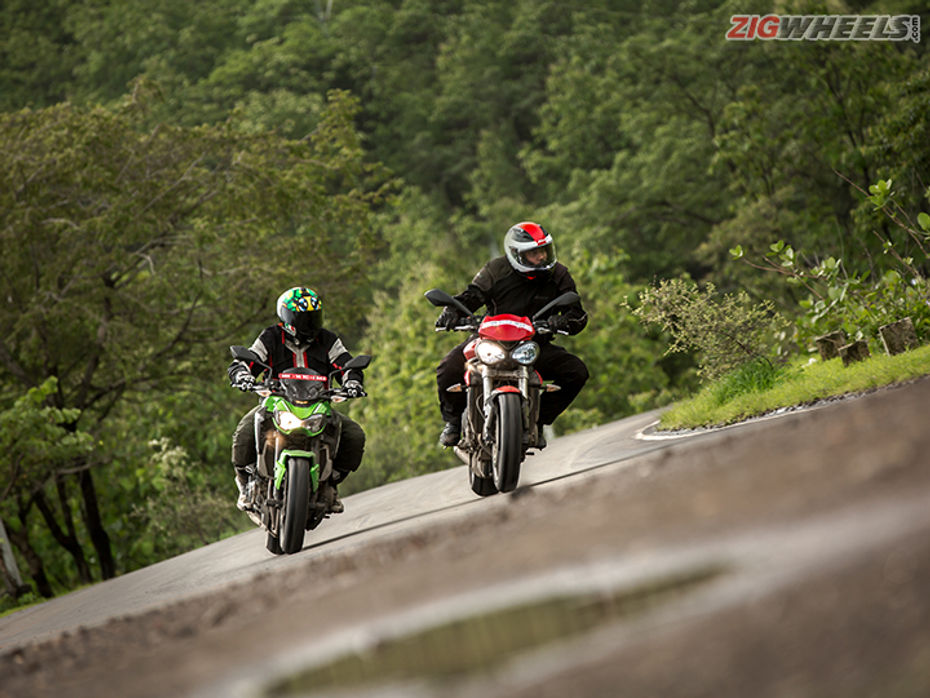
Ride, Handling & Braking:
Another aspect where naked bikes trump supersport machines is on the practicality and comfort front. Given the aggressive riding posture of sports bikes, one has to be fit as a fiddle to ride them but that isn’t the case of naked bikes. They offer almost similarly engaging handling dynamics as their faired siblings, which means a wider audience can enjoy them. Get behind the handlebar and you notice how distinct the riding posture is for both the bikes. The Kawasaki Z900 feels special, with its large fuel tank, generous saddle and wide bars giving it an aura of a big bike.
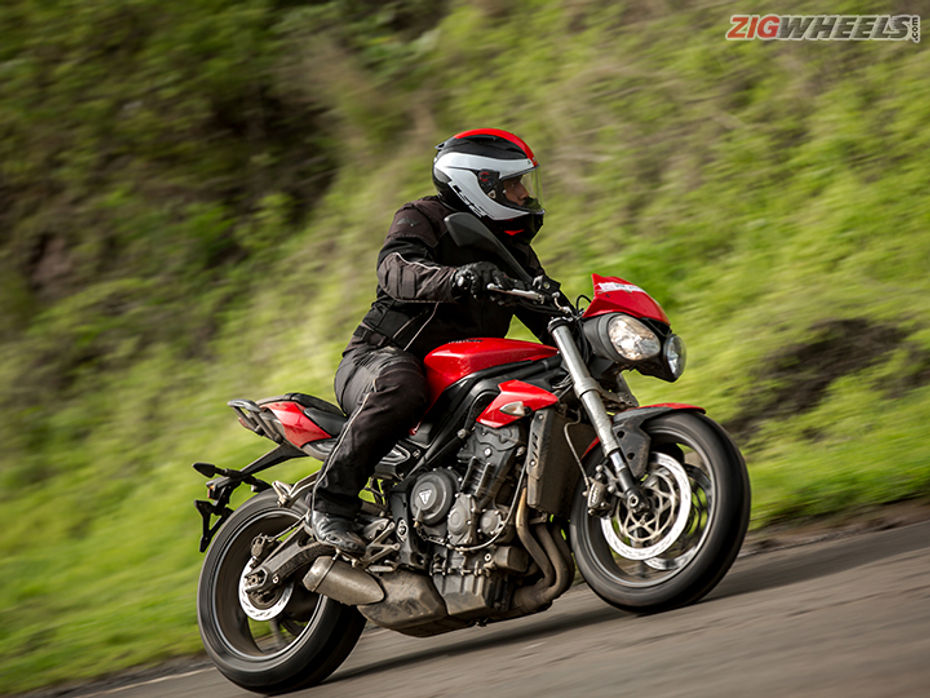
The Street Triple S on the other hand feels very compact and the handlebar is positioned farther from the rider, giving a more canted-forward riding position. On the Z900, you feel that you are sitting in the bike while on the Triumph you feel that you are on top of the bike, owing to which the rider encounters lesser wind blast on the Japanese bike. Also, the Z900 has lower saddle height and more space on the saddle, which means there is more space to move around, something which larger-built riders like me will appreciate.
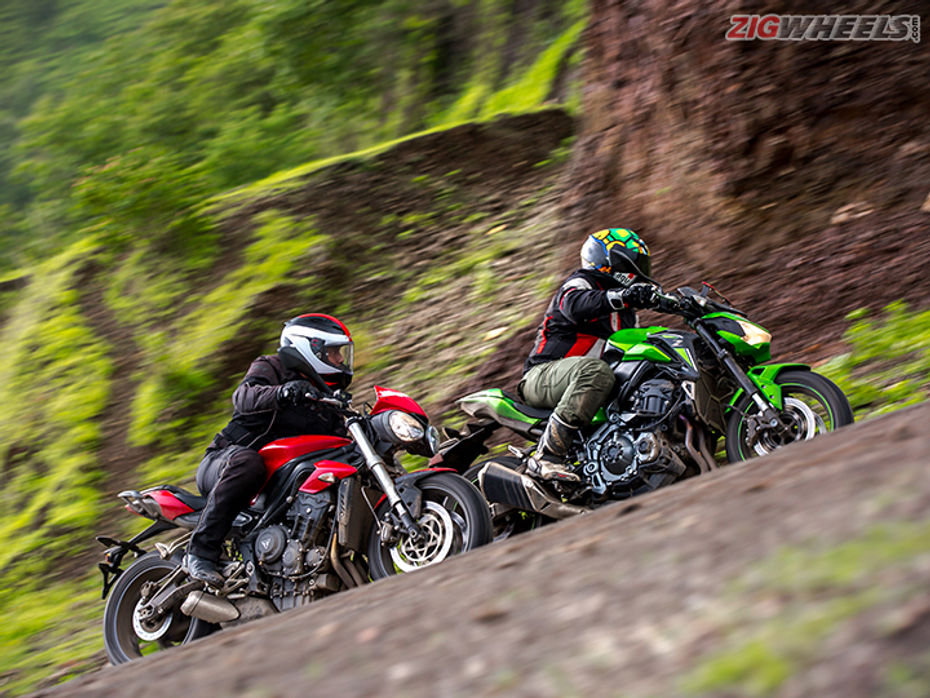
Like me, the Kawasaki Z800 faced a lot of flack for its weight. This meant, the new Z900 hit the gym, burned a lot of calories (in this case, steel) and managed to drop a whopping 21kg (my new weight loss inspiration) in comparison to its predecessor, and weighs 211kg.The bike now employs a trellis frame and redesigned subframe which have been instrumental in shedding the extra weight, but the Street Triple is significantly lighter at 186kg. The Street Triple still uses the same twin-spar frame as seen on the older bike but the steering geometry of the bike has been altered. The rake angle has been relaxed to 24.8 degrees (24.1 degrees on the older bike) while trail has been increased from 99.5mm to 104.3mm. While the changes might look minor they do have a drastic effect on the handling dynamics. For starters, the front end of the Street Triple S requires effort to change directions and this can be felt both on the twisting roads of Lavasa and while stuck in Pune traffic.
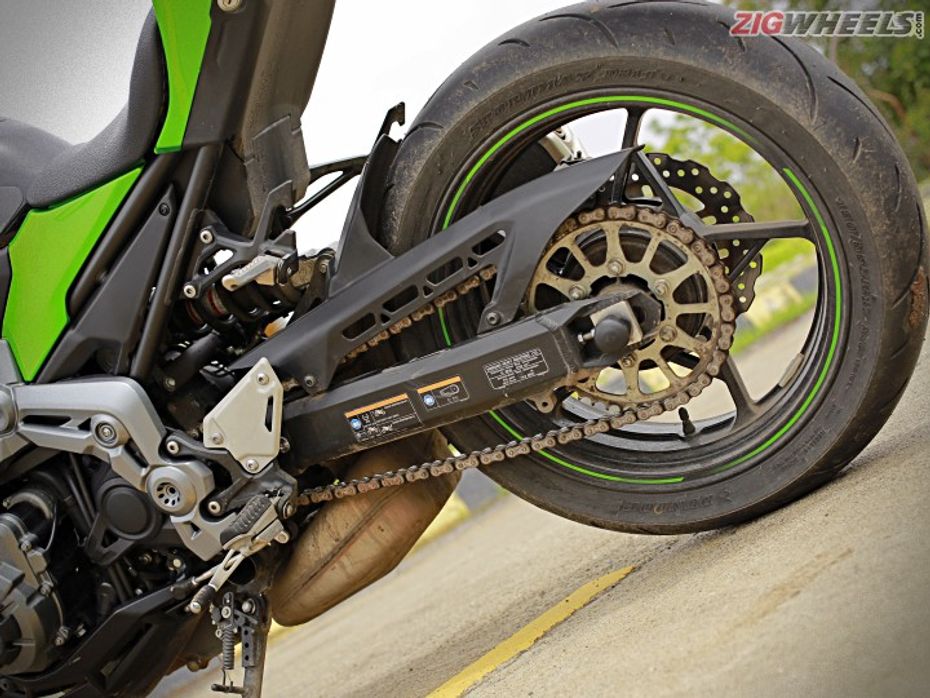
The new Street Triple S is a great motorcycle for sporty riding, but it doesn’t have the almost-telepathic handling dynamics of the older bike. The Kawasaki Z900 is a much sweeter-handling bike in comparison to its predecessor but it can’t match up to the swiftness of the Street Triple in corners. Most riders will appreciate the ease with which the Kawasaki can be ridden on public roads. But experienced riders on the right stretch of road will want nothing but the Triple. We rode both the bikes in pouring rain and felt that the Pirelli tyres offered more confidence than the Bridgestone rubber on the Kawasaki. Turning radius is almost similar but the Kawasaki with its lighter front-end felt more agile when we rode the bikes in traffic.
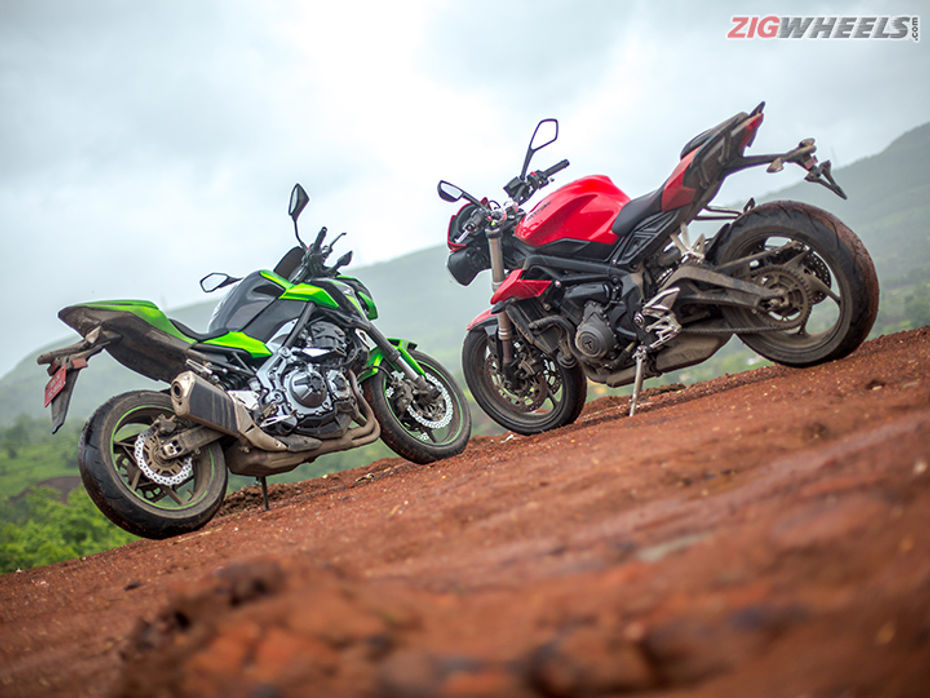
Both the bikes employ USD forks at the front and monoshock units at the rear, with the Z900 featuring a linked monoshock unit. It was the Triumph that rode over undulations more confidently as we didn’t feel the jolt on the back witnessed on the Z900 while riding over broken surfaces. The Street Triple also didn’t get as unsettled easily on bumpy corners and the new gullwing swingarm has also reduced the squatting tendency of the older bike. Low ground clearance is worrisome and one has to have the patience of a monk while riding over large speed breakers or be prepared to hear the gut-wrenching scraping noise.
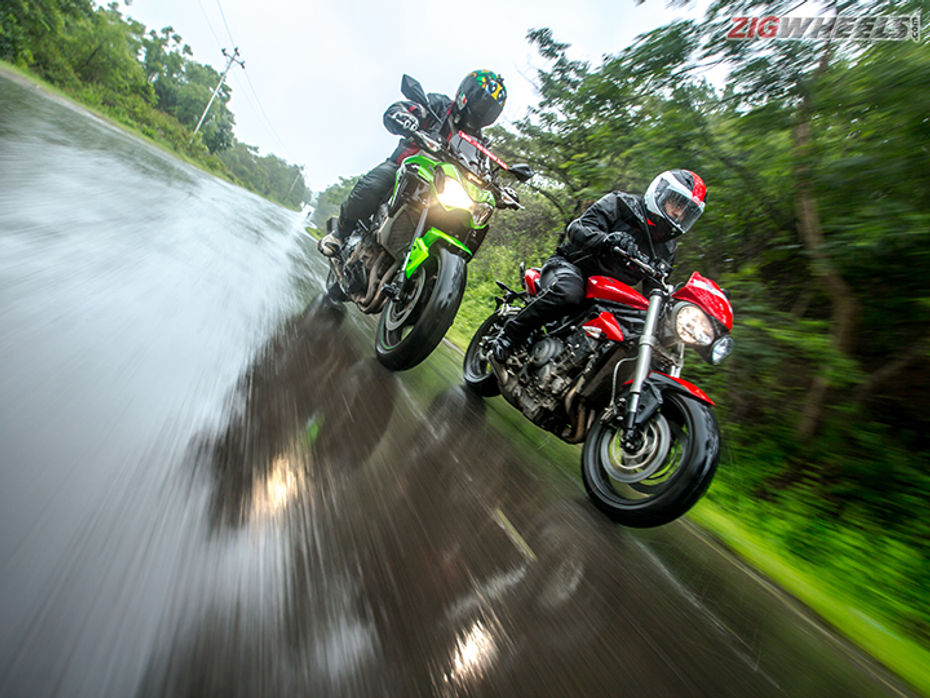
Braking hardware is identical and both get non-switchable ABS. The Brembo callipers on the Street Triple provide excellent bite and feedback whereas the Nissin unit on the Kawasaki felt a bit spongy, but in terms of sheer stopping power there isn’t much that separates them. In our braking test, the Z900 took 45.57m and 3.7 seconds to come to a halt from 100kmph whereas the Street Triple took 45.16m and 3.60 seconds.
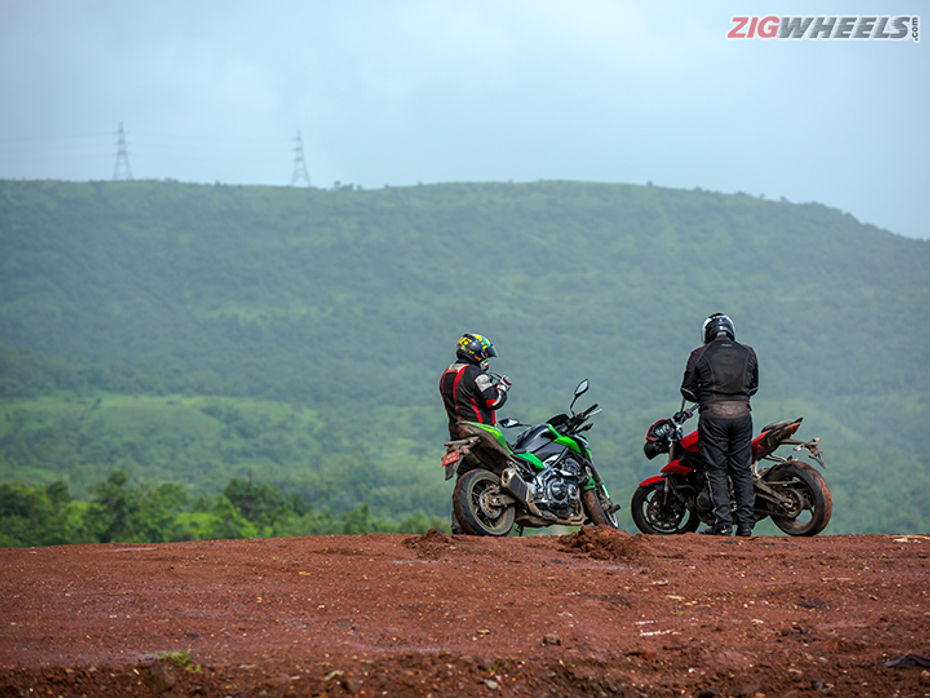
Verdict:
This head to head has to be the one that had us banging our heads to figure out the one we would put our money on. Both these machines despite their difference in character have a similar purpose, which is to be an exciting middleweight street motorcycle that is genuinely usable everyday. The Street Triple S will enthral you with its blistering performance and high speed handling dynamics along with the ferocious exhaust note in the background. The Z900 on the other hand makes a strong case for itself with its tractable motor and ease of riding in the city and highway.
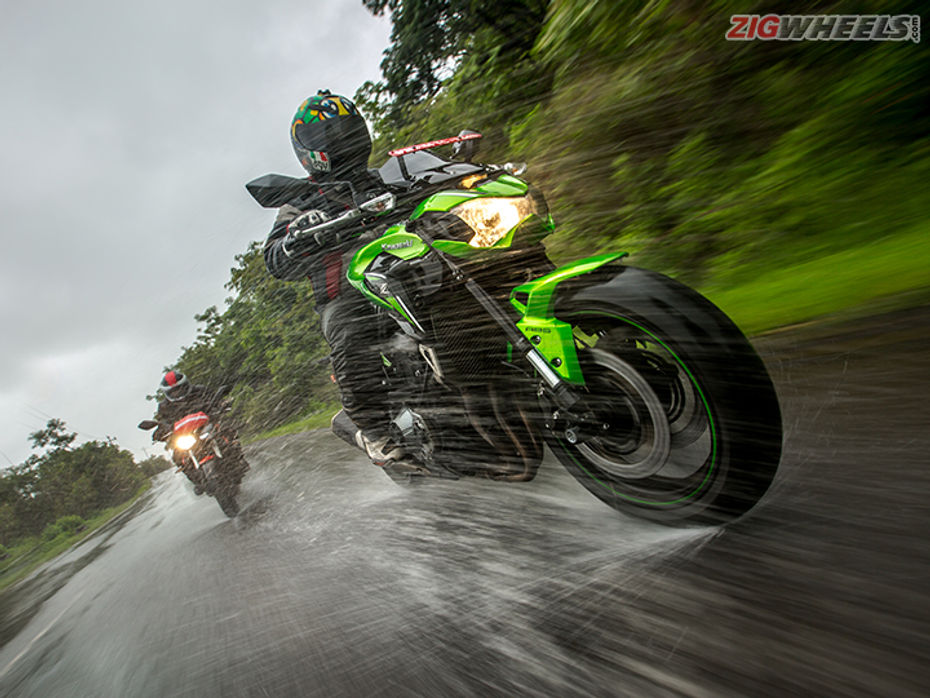
So which one is the winner? Well, it has to be the Kawasaki Z900 as it gives you that big bike experience both in terms of performance and design and makes for a great everyday motorcycle. And at Rs 7.68 lakh (ex-showroom without accessories), it offers great value in comparison to the Street Triple S, which is priced at Rs 8.5 lakh (ex-showroom). The Street is still a brilliant motorcycle and the default choice for sport riders, but if that is your calling and you are looking for the Street Triple magic of old, hold your horses till the arrival of the R or RS variants.
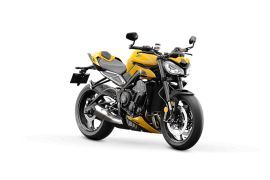

2020 Triumph Street Triple RS vs KTM 790 Duke vs Kawasaki Z900: Spec...

Triumph Street Triple RS vs Street Triple S: What's Different?

Triumph Street Triple vs Triumph Street Triple S - What’s Different

Street Triple vs Kawasaki Z800 vs Kawasaki ER6N: 0-60 0-100:...

Here’s How The BS6 Kawasaki Z900 Is Different From Its BS4...

The 2021 Ducati Monster Faces Its Competition

Triumph’s Trident Or Kawasaki’s Zed? Battle Of Mid-displacement...

Next-Gen Triumph Street Triple 765 Spied; Daytona 765 Might Be A...

BREAKING: Triumph Rides In The Craziest Street Triple Yet!

2023 Triumph Street Triple Range To Launch This Week
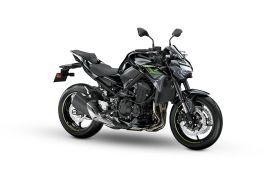 Kawasaki Z900
Kawasaki Z900
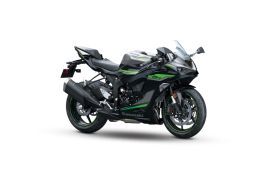 Kawasaki Ninja ZX-6R
Kawasaki Ninja ZX-6R
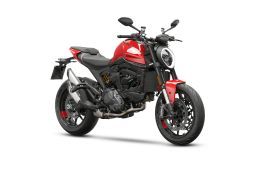 Ducati Monster
Ducati Monster
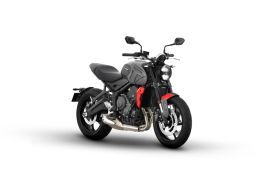 Triumph Trident 660
Triumph Trident 660
India's largest automotive community